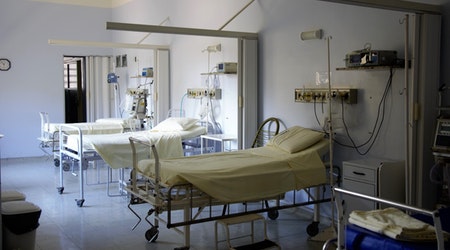Innovative Funding Sources Provide Upgrades to Healthcare Facilities’ Infrastructures
U.S. hospitals spend nearly $5 billion annually on energy and related costs. Most main hospital buildings in the U.S. are more than 20 years old so it’s not too hard to realize that a significant portion of that spending could be curbed through improvements in energy use. By upgrading energy nationwide, about $100 million could be saved each year in power costs, according to the Department of Energy (DOE).
The healthcare sector has grown more dependent upon electricity as digital medical records and equipment become increasingly essential to patient care. Energy consumption in healthcare facilities is the second largest expense behind staff compensation. This consumption and energy reliability is a top concern for healthcare facility management especially since critical hospital energy systems must be online and available 24 hours a day, even when the power grid is compromised.
By reducing dependence on the electrical grid or oil, a hospital lessens its exposure to volatile energy commodity prices. Additionally, when a hospital is able to remain functioning during an emergency such as Hurricane Sandy or winter storms that knock out power for days, the hospital becomes an even more vital community resource to the citizens it serves.
Unfortunately, the 2011 Hospital Energy Management survey, conducted by Health Facilities Management magazine and the American Society of Healthcare Engineers, showed that the majority of hospitals have not yet undertaken key steps necessary to achieve grid independence. These steps include conducting regular energy audits, developing a strategic master energy plan, monitoring baseline energy performance, and implementing on-site power systems.
Upgrading aging facility infrastructures and equipment that inefficiently consume energy are historically not prioritized because of competing clinical needs and limited capital dollars. This lack of access to sufficient capital restricts the ability of these institutions to achieve efficient operations.
Both public and private hospitals have worked hard to control their operating costs in the face of thinning margins, an uncertain economy and a challenging regulatory environment. As a result, many have deferred or are deferring facilities’ maintenance projects based on budget constraints and the need to place quality patient care ahead of infrastructure improvements.
Recent electrical grid failures related to storms, overloads, and security breaches have brought renewed attention to electricity system reliability, particularly for critical safety and medical infrastructure. According to a Pew Charitable Trust research report, “Combined Heat and Power Provides Energy Resiliency to Medical Facilities,” facilities equipped with combined heat and power (CHP) systems have an established record of providing reliable off-grid power during major disruptions and are important components of hospitals’ resiliency plans that also lower utility costs. CHP systems are also superior to installing additional diesel generators (beyond those required to serve life safety and critical care loads) as these systems are not able to provide energy cost savings, they don't create greater efficiency or savings and they are dependent on the availability of diesel fuel. During prolonged outages such as what occurred with Hurricane Sandy, diesel supplies were depleted while natural gas supplies still flowed.
CHP technologies offer a dependable source of power and increase a facility’s resiliency by boosting off-grid operation capabilities, ensuring that hospital services are uninterrupted. These highly efficient systems also allow hospitals to run at greater capacity during grid failures when they might otherwise be reliant on emergency generators that are generally designed to serve solely life safety and critical care loads.
Because of the ability of CHP to help save lives, reduce costs and pollution, withstand extreme weather, and operate during blackouts, the Pew Charitable Trust recommends that its adoption should be encouraged at all medical facilities and other buildings that provide critical services to communities.
Fortunately, creative funding solutions, federal tax programs and many state and local incentives are available to help healthcare organizations improve their aging energy infrastructure and develop an energy system not dependent on the electric grid or back-up generators.
Related Topics:











